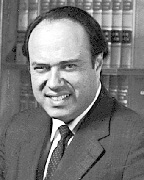One of the most challenging aspects of drafting condominium documents is to make the master deed consistent with the floor plans.
The Massachusetts condominium statute requires that a set of floor plans of the building be recorded with the master deed. The floor plans must show the layout, location, unit numbers and dimensions of the units, as built.
There can be problems if the description of the units and common areas in the master deed differ from the description in the floor plans.
I usually put a provision in the master deed that, in the event of a conflict, the floor plans will control.
A common problem occurs when the plans show a common area to be part of a unit, or when the plans show a part of a unit to be common area.
In order to avoid problems down the road, it is best for the developer and his lawyer to review the plans carefully to make certain the plans have been done properly.
I always provide in the master deed that the developer can unilaterally file a corrective amendment of the master deed with revised plans in order to correct errors.
Plans can alert the developer to problems. For example, in the event that the plans show that an HVAC unit servicing unit A is actually located in unit B, this should be mentioned in the master deed. The master deed can provide that unit A has an easement for the HVAC unit to be located in unit B, thereby eliminating a fight between the two unit owners. This level of detail is the hallmark of well drafted condominium documents.
Saul Feldman is a real estate attorney with Feldman & Feldman, P.C., Boston, Mass.
Tags:









